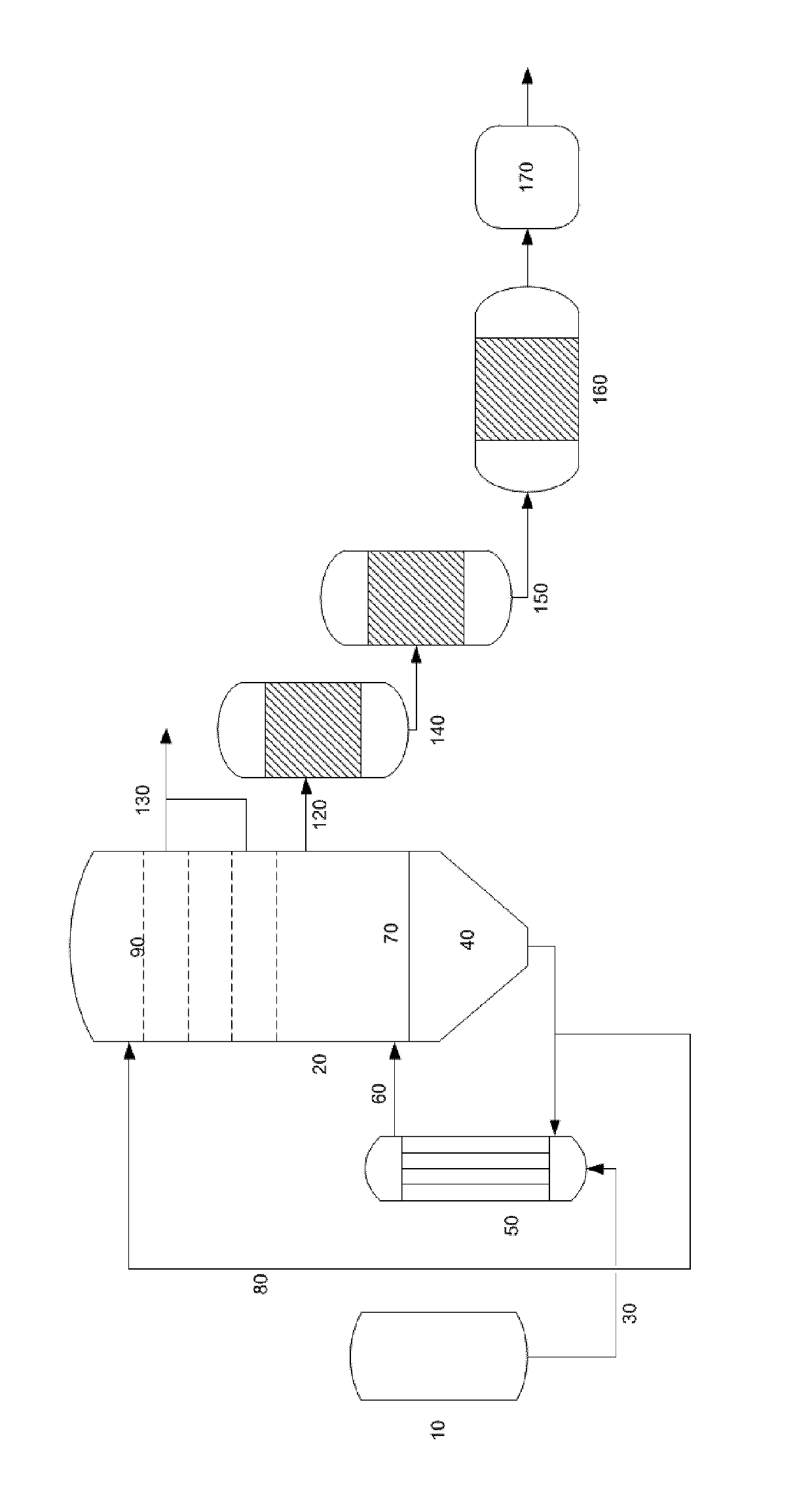Continuous process for making polybutylene terephthalate using purified terephthalic acid and 1,4-butane diol
a technology of terephthalic acid and polybutane diol, which is applied in the direction of chemical/physical/physical-chemical processes, chemical apparatus and processes, chemical/physical/physical-chemical stationary reactors, etc., can solve the problems of global dmt supply, serious dmt sourcing and pricing challenges, and potential increase of ceg concentration in pbt polymer resin
- Summary
- Abstract
- Description
- Claims
- Application Information
AI Technical Summary
Benefits of technology
Problems solved by technology
Method used
Image
Examples
example 1
[0240]A series of experiments 1.1-1.10 were performed in a continuously operating process according to the conditions set out here below.
[0241]BDO and PTA were mixed in a mole ratio as presented in table 1A in a slurry paste vessel to form a mixture. The temperature, pressure and residence time in the mixer are presented in table 1A.
[0242]
TABLE 1Aconditions slurry paste vessel and esterification section of tower reactorExample1.11.21.31.41.51.61.71.81.91.10Mole ratio BDO / PTA in1.431.431.431.441.431.431.421.411.351.32mixerTemperature mixer (° C.)80807980808080817981Pressure mixer (bar)1.031.031.041.031.041.041.041.041.041.04Residence time mixer3.23.02.73.02.83.13.43.73.03.9(hours)Mole ratio BPD / PTA2.922.872.752.872.742.902.693.232.552.43entering towerFirst catalyst quantity1009090909010070707070(ppm)Temperature esterification245244246244246243247245244244(° C.)Treatment pressure (bar)0.790.790.790.790.790.790.790.790.790.79Residence time tower1.461.461.281.451.311.441.651.591.451.92r...
PUM
| Property | Measurement | Unit |
|---|---|---|
| pressure | aaaaa | aaaaa |
| temperature | aaaaa | aaaaa |
| pressure | aaaaa | aaaaa |
Abstract
Description
Claims
Application Information
 Login to View More
Login to View More - R&D
- Intellectual Property
- Life Sciences
- Materials
- Tech Scout
- Unparalleled Data Quality
- Higher Quality Content
- 60% Fewer Hallucinations
Browse by: Latest US Patents, China's latest patents, Technical Efficacy Thesaurus, Application Domain, Technology Topic, Popular Technical Reports.
© 2025 PatSnap. All rights reserved.Legal|Privacy policy|Modern Slavery Act Transparency Statement|Sitemap|About US| Contact US: help@patsnap.com

